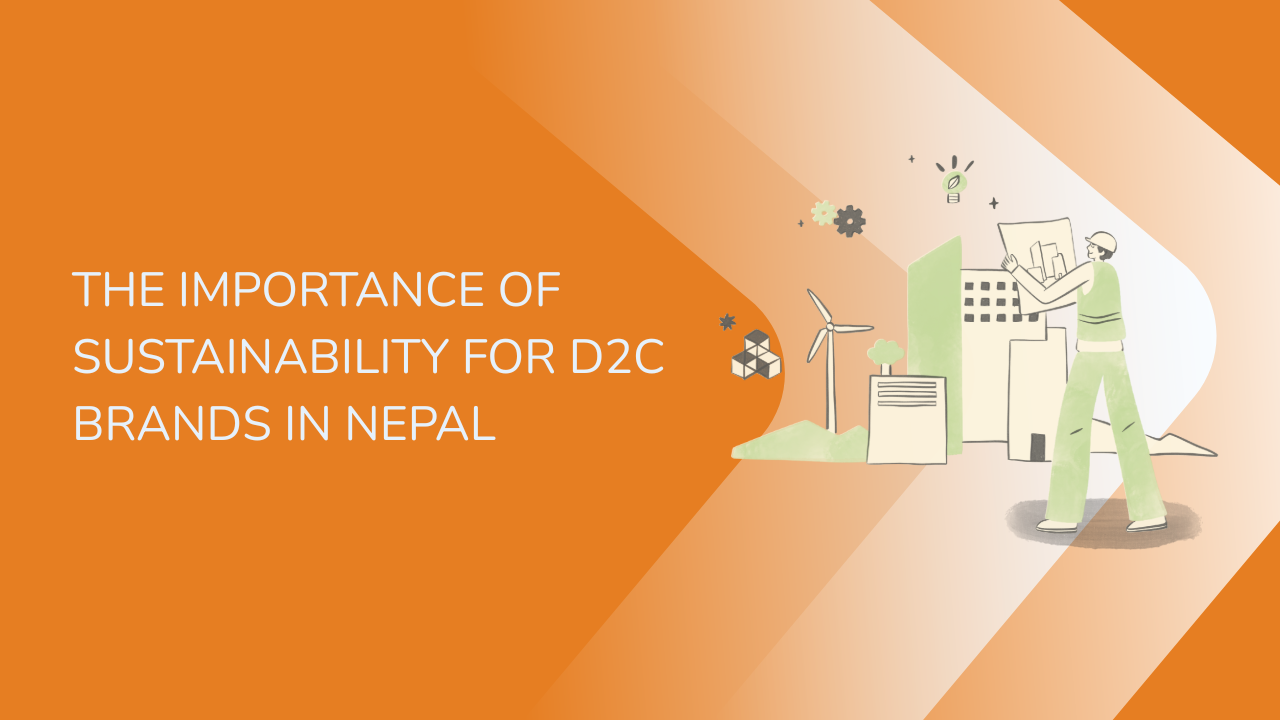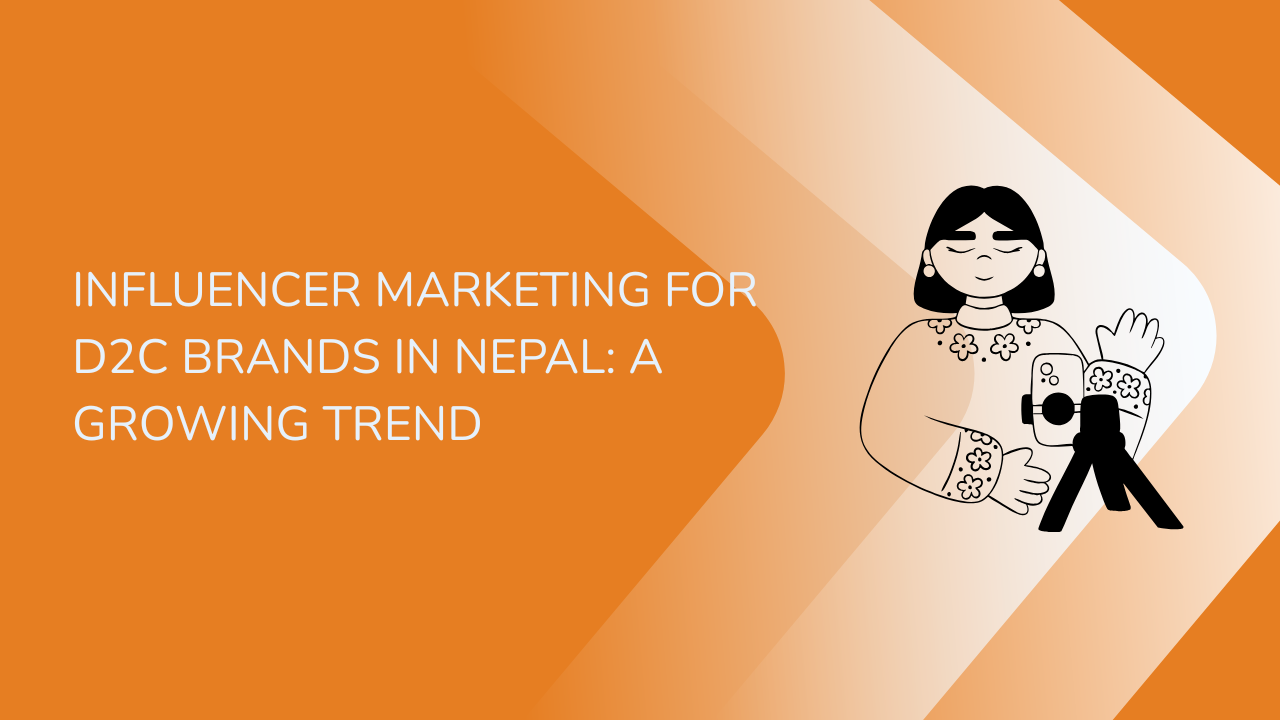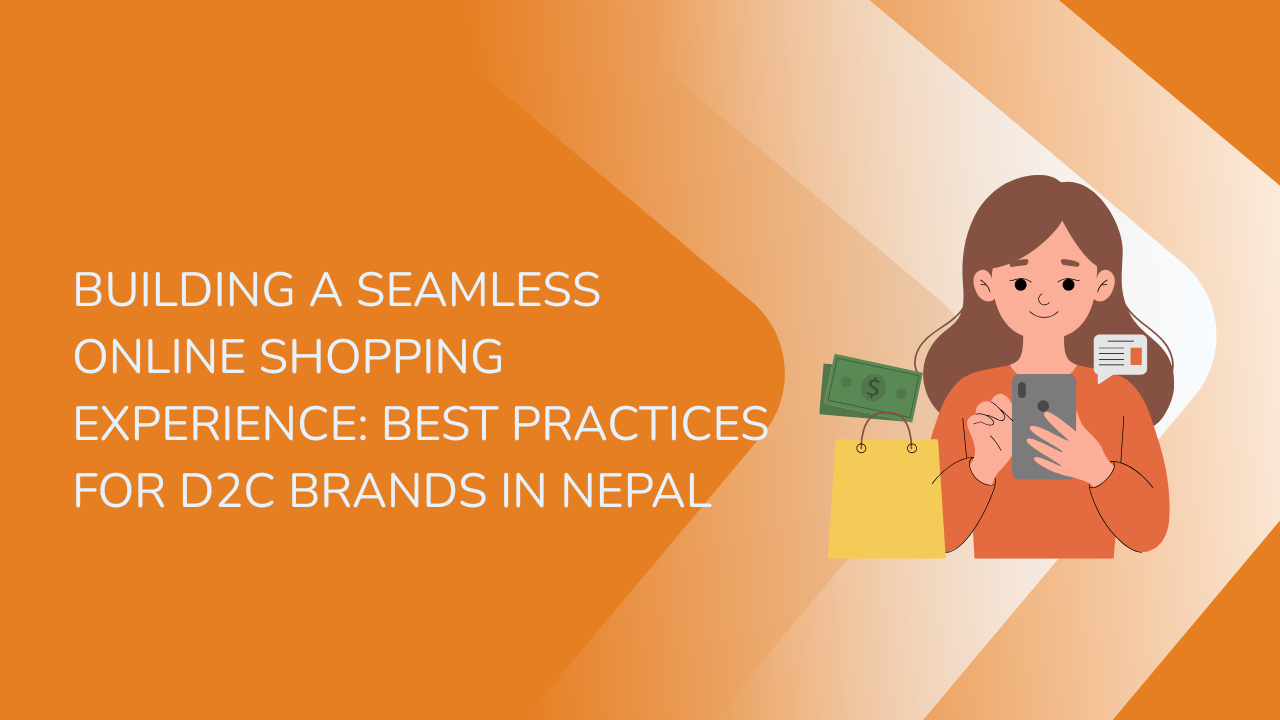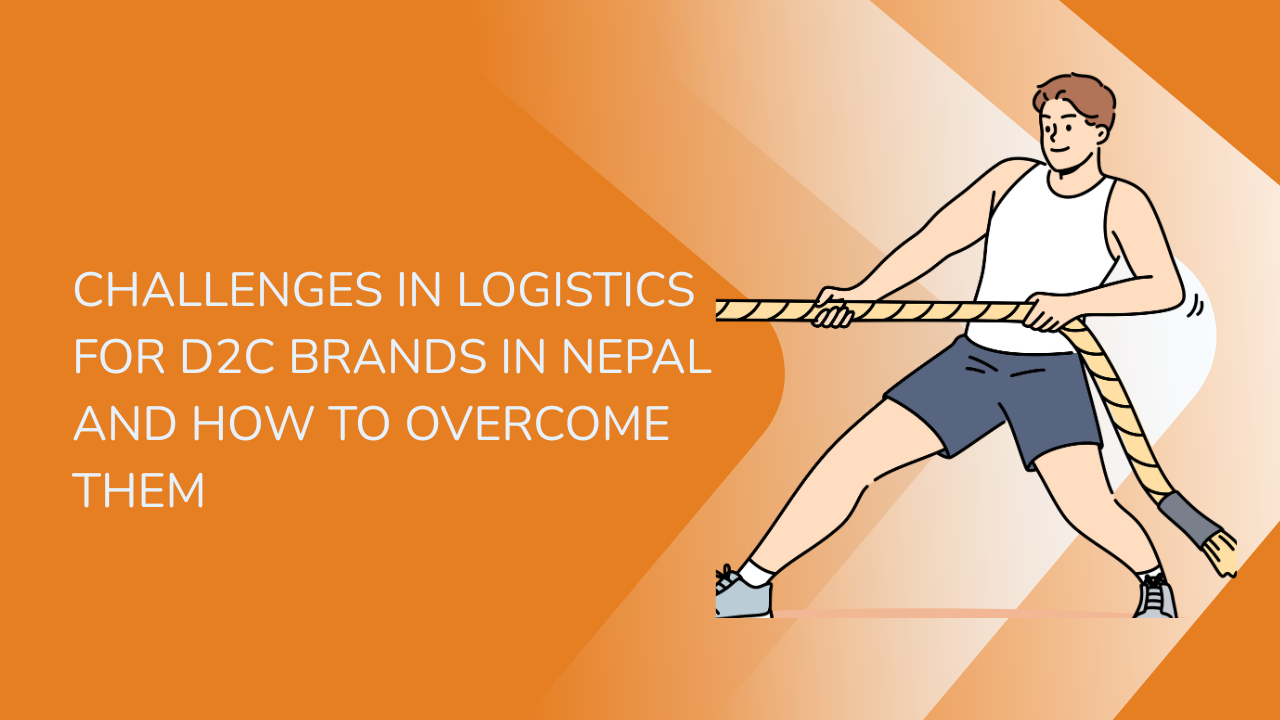Share this Article
Influencer marketing has become an essential part of the marketing strategies for Direct-to-Consumer (D2C) brands in Nepal, helping businesses increase visibility, build brand awareness, and drive sales. As social media usage has surged across the country, influencers on platforms like Instagram, Facebook, TikTok, and YouTube have gained significant traction, holding a strong influence over their followers’ buying decisions. In Nepal, where internet penetration is increasing rapidly and social media platforms are widely popular, D2C brands are tapping into this growing trend to reach their target audience effectively.
This blog will delve into the growing role of influencer marketing in Nepal for D2C brands, the types of influencers in the market, and how these brands are leveraging influencers to boost their presence and sales. We will also examine the challenges D2C brands face in influencer marketing and share best practices for brands looking to make the most of this dynamic strategy.
Why Influencer Marketing is Effective in Nepal
Influencer marketing is gaining momentum worldwide, and Nepal is no exception. With the growing popularity of digital platforms and an expanding e-commerce market, influencer marketing has proven to be a powerful tool for brands, particularly D2C brands, to connect directly with consumers.
Building Trust with Followers
The primary reason influencer marketing works so well is the trust that influencers have built with their audiences. In Nepal, many influencers share content related to fashion, beauty, fitness, tech, and lifestyle, and they have developed a loyal following that trusts their opinions. Consumers in Nepal are more likely to trust product recommendations from influencers they follow compared to traditional advertising methods. Influencers are seen as more authentic and credible, making their product endorsements much more effective in driving purchasing decisions.
Targeted Reach and Engagement
One of the key advantages of influencer marketing is its ability to target specific consumer groups. In Nepal, social media platforms enable brands to reach highly targeted audiences based on interests, demographics, and location. This precision allows D2C brands to engage directly with consumers who are more likely to purchase their products. Influencers usually cater to niche markets, allowing brands to connect with smaller, highly engaged audiences that may not be reached through traditional advertising channels.
In addition, influencers maintain high engagement with their followers, responding to comments, sharing stories, and initiating conversations. This active engagement enhances the connection between the brand and the consumer, encouraging deeper interactions and increasing the likelihood of purchases.
Types of Influencers in Nepal
Influencers in Nepal can be categorized based on their following size, and each category offers different benefits to D2C brands. These categories are:
1. Micro-Influencers
Micro-influencers typically have between 1,000 and 10,000 followers. Despite their smaller audience size, micro-influencers tend to have higher engagement rates, which makes them a valuable asset for D2C brands. Their followers often perceive them as more relatable and authentic, which is why their product endorsements are seen as more genuine. Micro-influencers have a strong influence on niche markets, and their content can be tailored to suit specific consumer needs.
For D2C brands, partnering with micro-influencers can be cost-effective while also delivering highly targeted and engaging content. The personalized nature of micro-influencer marketing ensures that their followers pay more attention to their recommendations, leading to higher conversion rates.
2. Macro-Influencers
Macro-influencers are those who have between 10,000 and 100,000 followers. While they have a broader reach than micro-influencers, their engagement rates may be lower. However, they still possess significant influence, especially when targeting a more general audience. D2C brands can benefit from working with macro-influencers to build brand awareness and visibility in the market.
Macro-influencers are often well-established figures in their niche, whether it be lifestyle, fashion, or entertainment. Their ability to engage large audiences makes them an ideal choice for D2C brands looking to expand their reach beyond niche markets.
3. Celebrity Influencers
Celebrity influencers in Nepal are high-profile figures, such as actors, musicians, or television personalities, with millions of followers. While collaborating with celebrity influencers can be more expensive, it can provide massive exposure to a brand. The endorsement of a celebrity can significantly raise a D2C brand’s credibility and create instant recognition in the market.
Celebrity influencers tend to have a far-reaching impact, often transcending geographical and demographic boundaries. However, the cost of working with celebrity influencers is higher compared to micro and macro influencers, making it more suitable for larger brands with significant marketing budgets.
How D2C Brands Are Using Influencer Marketing in Nepal
D2C brands in Nepal are increasingly turning to influencer marketing to boost their brand awareness and sales. These brands collaborate with influencers in a variety of ways to create compelling and engaging content that resonates with their target audience. Here are some common tactics D2C brands are using:
1. Product Endorsements and Reviews
Product reviews are one of the most common methods used by D2C brands in Nepal to promote their products. In this strategy, brands send their products to influencers for endorsement or review. The influencer shares their genuine experience with the product, either through an Instagram post, YouTube video, or a Facebook post.
These reviews can be particularly effective in Nepal, where consumers seek advice and feedback from trusted sources before making purchasing decisions. A positive review from an influencer who aligns with the brand’s values can greatly influence potential customers.
2. Unboxing Videos and Tutorials
Unboxing videos have gained immense popularity in Nepal, particularly among younger audiences. In these videos, influencers open product packages and showcase the items inside. D2C brands often send their products to influencers for unboxing videos, which provide viewers with a detailed look at the product.
In addition to unboxing, influencers may create tutorial videos that demonstrate how to use the product. These videos allow consumers to see the product in action, giving them confidence in its quality and functionality. Such content is particularly popular for tech gadgets, cosmetics, and fashion items, as consumers appreciate the opportunity to see the products in real life before purchasing.
3. Influencer-Hosted Giveaways and Contests
Giveaways are a great way to engage followers and create excitement around a brand. D2C brands in Nepal often collaborate with influencers to host contests where followers can win products by following the brand on social media, tagging friends, or sharing the post. These giveaways help to increase the brand’s visibility and encourage users to interact with the content.
By partnering with influencers to host giveaways, D2C brands can tap into a larger pool of potential customers and build brand awareness quickly. Giveaways also provide an incentive for consumers to follow the brand and become more engaged, which can lead to future purchases.
4. Affiliate Marketing
Affiliate marketing is another avenue for D2C brands in Nepal to leverage influencer marketing. In this model, influencers promote products and earn a commission for each sale made through their unique affiliate links. This performance-based strategy benefits both the brand and the influencer, as it directly ties compensation to sales generated.
Affiliate marketing is a cost-effective way for D2C brands to work with influencers, as the brand only pays for actual sales. It also incentivizes influencers to put more effort into promoting the product, as their earnings depend on the conversions they drive.
5. Limited-Edition Products and Collaborations
Many D2C brands in Nepal collaborate with influencers to create exclusive or limited-edition products. These collaborations generate excitement among the influencer’s followers and encourage them to purchase the product before it sells out. Limited-edition products create a sense of urgency and exclusivity, which can drive demand and increase sales.
Collaborations also allow brands to tap into the influencer’s fan base and increase visibility in a way that feels more organic and authentic. When influencers co-create products with brands, it strengthens the connection between the brand and its customers, as followers feel more personally connected to the brand.
Challenges in Influencer Marketing in Nepal
While influencer marketing offers many benefits, there are several challenges that D2C brands in Nepal face when implementing this strategy. Some of the key challenges include:
1. Finding the Right Influencers
One of the primary challenges for D2C brands is finding the right influencers who align with the brand’s values and target audience. While there are many influencers in Nepal, not all of them may resonate with a particular brand’s customer base. Choosing influencers whose audience matches the brand’s target demographic is crucial to the success of the campaign.
D2C brands must conduct thorough research to ensure that the influencers they work with have authentic engagement and a following that is interested in their products.
2. Authenticity and Transparency
In Nepal, as in many other countries, consumers are becoming more skeptical of influencer marketing. They are increasingly aware of when an influencer is promoting a product solely for financial gain, and they may question the authenticity of the endorsement. Brands need to ensure that influencers are transparent about their partnerships and only promote products they genuinely believe in.
Authenticity is vital to building trust with consumers. If an influencer is seen as promoting products purely for monetary reasons, it can damage the brand’s reputation and lead to a loss of consumer confidence.
3. Measuring ROI
Measuring the return on investment (ROI) from influencer marketing can be challenging. Unlike traditional advertising methods, where the impact can be directly measured, influencer marketing often produces more intangible results such as brand awareness, engagement, and customer sentiment. D2C brands must implement tracking systems, such as affiliate links and promo codes, to monitor sales generated through influencer campaigns.
4. Budget Constraints
Influencer marketing can be expensive, especially when working with high-profile influencers or celebrities. For smaller D2C brands, the cost of partnering with well-known influencers can strain marketing budgets. However, working with micro or macro-influencers offers a more affordable option without compromising on engagement.
Brands need to find a balance between their marketing goals and budget to ensure they are getting the most value from influencer partnerships.
Best Practices for Influencer Marketing in Nepal
To ensure success in influencer marketing, D2C brands should follow these best practices:
1. Choose the Right Influencers
Brands must carefully select influencers who align with their values, audience, and goals. Working with influencers who share the brand’s ethos ensures a more authentic partnership and improves the chances of successful campaigns.
2. Foster Long-Term Relationships
Instead of working with influencers on a one-off basis, D2C brands should consider building long-term relationships with them. Long-term collaborations help to maintain consistency in messaging and foster greater loyalty among the influencer’s audience.
3. Set Clear Objectives
Before launching an influencer campaign, D2C brands should define clear goals and objectives. Whether it’s increasing brand awareness, driving traffic, or boosting sales, setting measurable targets ensures that the campaign can be evaluated for its effectiveness.
4. Allow Creative Freedom
While brands should provide influencers with clear guidelines, they should also allow them creative freedom in how they present the product. Influencers know their audience best and can create more engaging content when given the space to showcase the product in their unique style.
5. Monitor and Track Results
D2C brands should monitor the performance of their influencer campaigns using analytics tools, tracking links, and engagement metrics. This allows them to assess the effectiveness of the campaign and make adjustments if necessary.
Conclusion
Influencer marketing has proven to be a powerful and effective tool for D2C brands in Nepal, helping them build brand awareness, increase visibility, and drive sales. By partnering with the right influencers, D2C brands can create authentic and engaging content that resonates with their target audience. However, like any marketing strategy, influencer marketing comes with its challenges, including finding the right influencers, ensuring authenticity, and measuring ROI. By following best practices and overcoming these challenges, D2C brands can effectively leverage influencer marketing to succeed in Nepal’s competitive market.







